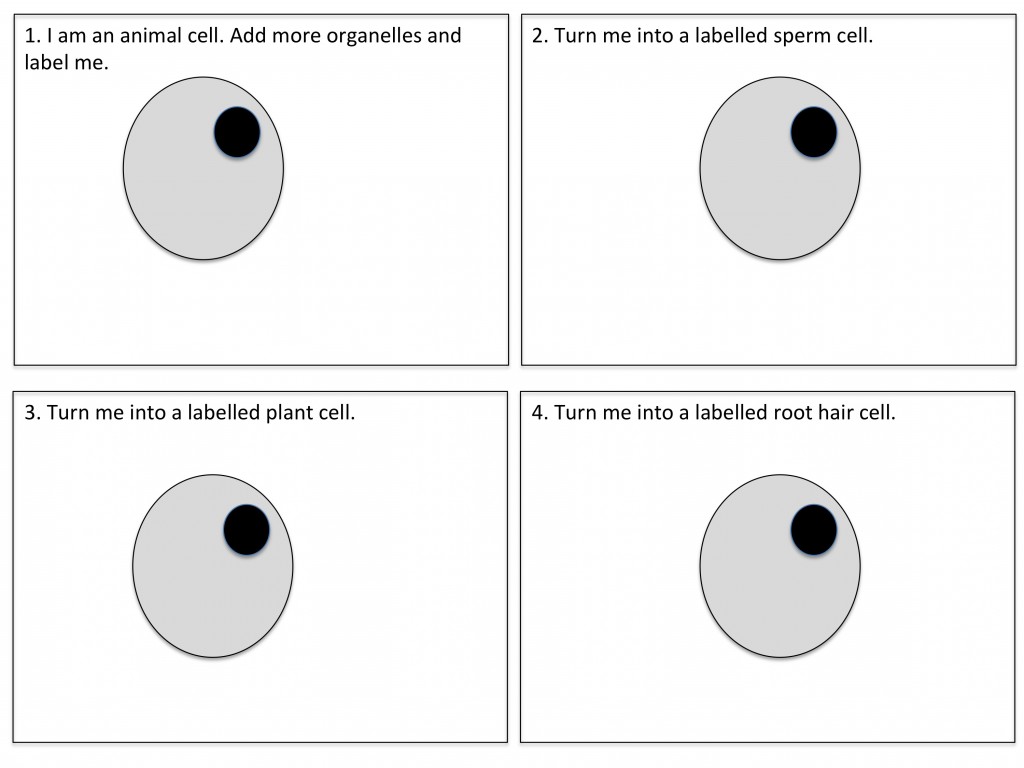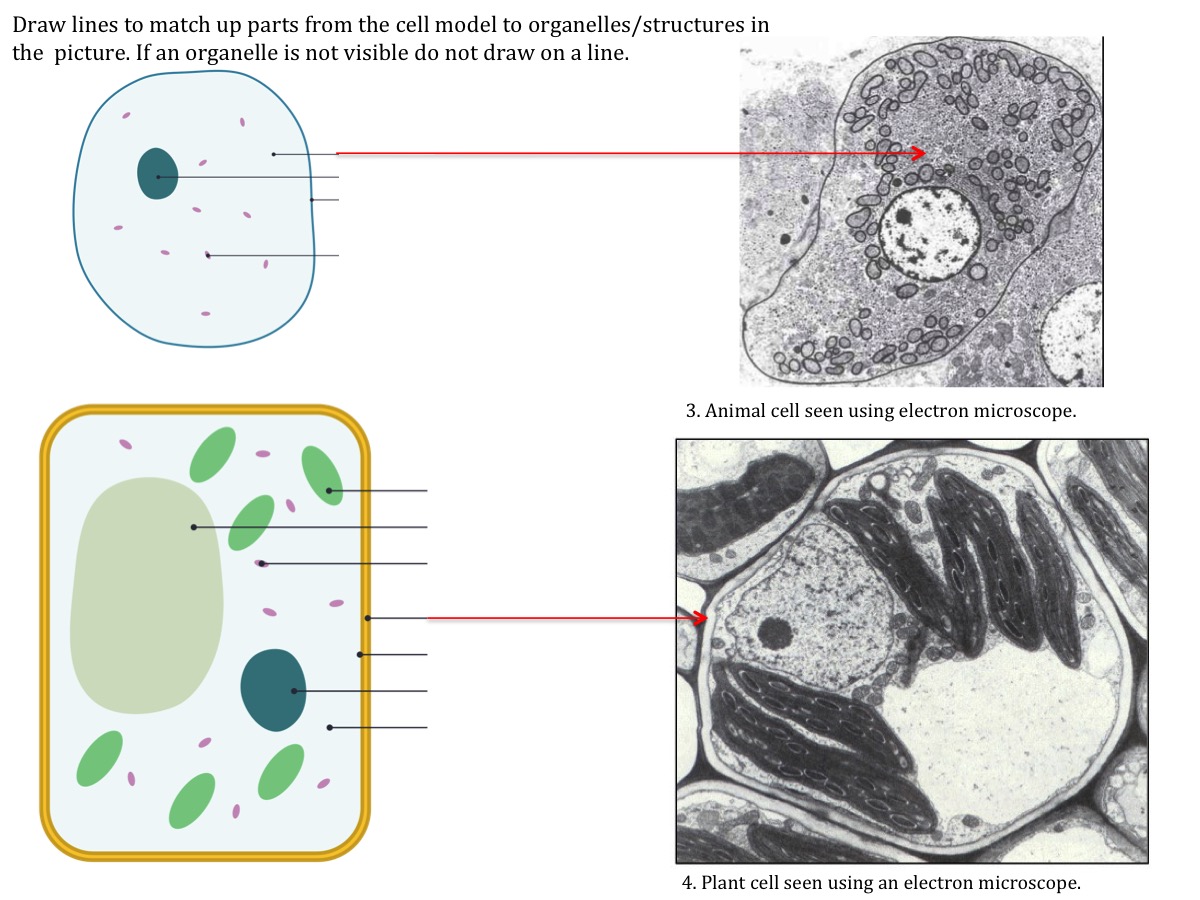Cell structure teaching resources
Worksheets and lesson ideas to challenge students aged 11 to 16 to think hard about plant and animal cells including specialised cells (GCSE and Key Stage 3)
Overview: cells are not small planar structures! They are dynamic, three-dimensional bags of fluid containing a host of exciting organelles and chemical reactions. Take time to help students appreciate that cells are the building blocks of all living organisms and share many features in common – evidence for a common ancestor. Help students get an appreciation of scale, by explicitly stressing the relationship between atom, molecule, cell, tissue and organ. Also, spend time labelling a range of cell diagrams to prevent students from seeing the textbook image as ‘real’. The idea that specialised cells, such as a muscle or nerve cell, contain exactly the same DNA is mind blowing! Although we tend to start by comparing animal and plant cells, students will later learn that the two main types of cell are eukaryotic and prokaryotic and that some eukaryotic organelles were once free living bacteria.
Big idea: organisms are organised on a cellular basis and have a finite life span
Key concept: cells are the fundamental structural, functional and biological unit of life. Living organisms differ in how their cells are arranged, the organelles their cells contain and by the proteins their cells make.
Linked knowledge: living, dead and never lived, particles
Misconception [scientific idea]: living things are not made from molecules, they are made from cells [living things are made from molecules and cells]; confusion over relative size of cells in comparison to atoms, molecules, proteins, tissues and organs; specialised cells have specialised DNA [cells in the same organism have the same DNA]
Teaching resources
Where to start?
Look at your own cells under a microscope (see below).
Observing cells
Take some epithelial cells from your cheek and show these to the class. This is an excellent bridge – i.e. explicitly linking the organism(you!) to the ‘invisible’ cell. A fun homework is to challenge students to make models of different specialised cells – you will be amazed by their creativity!
Labelling and drawing plant, animal and specialised cells
Key Stage 3 activity on labelling animal, plant and specialised cells.Students are given a worksheet showing basic animal cells. They modify the original diagram to create a series of new cells. This is a great and easy way to assess understanding of cell structure and help students see the features that are shared between different cells. (PDF)
GCSE activity labelling plant and animal cells. Students label plant and animal cells. They consider which organelles are shared between plants, animals and fungi. Students imagine what the common ancestor of all three groups could have looked like. (PDF)
Calculating cell size using a stage micrometer
GCSE activity to explore whether large onions have large cells. Students investigate when big onions have big cells. This simple question provides a context to teach how to use a graticule and stage micrometer as well as the different types of sampling in biology. (PDF)
Comparing plant and animal cells
GCSE activity comparing animal and plant cells worksheet. Students complete a Venn diagram to compare plant and animal cells. The activity can be modified to include bacterial cells and other cell types. It is a powerful approach for teaching the idea of compare and contrast. (PDF)
Functions of cell organelles
GCSE and Key Stage 3 worksheet on plant cell organelles. Students annotate a cartoon image of a labelled plant cell. They have to use their imagination to explain what each organelle would say if they could talk. This resource was contributed by Jane Masters (@mrsjmasters). View Jane’s blog at https://pedagoggles.wordpress.com/.
Worksheet on cell structure and organelle function worksheet. Students compare city parts to cell organelles. They discuss the limitations of using analogies in science. You could extend the activity by challenging students to come up with their own analogy for a specialised cell. This activity will need to be adapted for GCSE groups. (PDF)
 Light and electron microscope: resolution and magnification
Light and electron microscope: resolution and magnification
GCSE worksheet labelling cells seen under the light and electron microscopes. Use this activity once students have been introduced to the structure of plant and animal cells, as well as the differences between light and electron microscopes. Students match diagrams of cells to images taken using light and electron microscopes. Students then discuss the difference between resolution and magnification. (PDF)
Comparing prokaryotic and eukaryotic cells
GCSE worksheet comparing prokaryotic and eukaryotic cells. Students label electron micrographs of prokaryotic and eukaryotic cells. We then look at a recent tree of life and consider how much diversity eukaryotic and prokaryotic organisms make up. (PDF)
Labelling eukaryotic cells
A Level worksheet for students to label a eukaryotic cell using electron micrographs. Sometimes students find it difficult to make links between how cells appear under the microscope and how they are represented in textbooks. Here, students are shown annotated electron micrographs. They use this to label a typical textbook diagram of a eukaryotic cell. Students consider whether the diagram or the electron micrographs represent what cells really look like. This worksheet could be easily adapted for plant cells. It makes a simple labelling activity much more challenging. It was contributed by Thomas Kitwood. (PDF)
Thinking deeper
- How many glucose molecules would fit end to end along a cheek cell?
- A nerve cell and a cheek cell in your body have exactly the same DNA – so how come they are different?
- Animal cells do not have cell walls. What are the advantages and disadvantages of having cells without cell walls?
- Prokaryotes are an incredibly successful group of organisms. Some of this success is down to their small size – suggest how being ‘small’ can be advantageous.


